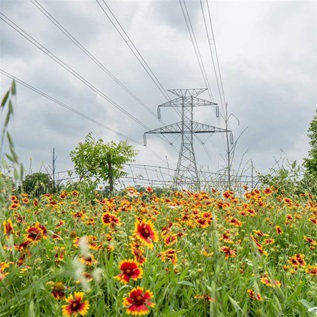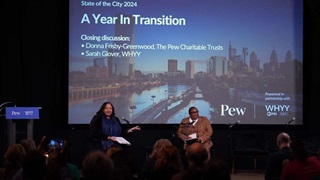California Adopts Targets to Preserve, Restore Coastal Habitats for Climate Benefits
A proposed bond would help fund new commitments for eelgrass and wetlands

On April 22, the California Natural Resources Agency (CNRA) adopted new carbon pollution reduction targets for the state’s forests, wetlands, grasslands, rangelands, deserts, urban green spaces, and agricultural lands—known collectively as “natural and working lands.” These targets will help the state reduce greenhouse gas emissions while bolstering the ability of nature and people to adapt to a changing climate. The targets are also among the first in the nation to explicitly account for the carbon sequestration powers of coastal habitats, broadly referred to as “blue carbon.”
Finalizing these targets marks an important milestone for implementing a 2022 state law that requires CNRA to work with the California Air Resources Board, the California Environmental Protection Agency, and the California Department of Food and Agriculture on greenhouse gas reduction targets for natural and working lands.
Although the most effective way to limit carbon pollution is by reducing fossil fuel emissions, improving management of natural and working lands can play an important role as well. When healthy, these lands can sequester carbon and limit future greenhouse gas emissions. Coastal wetlands in particular punch above their weight when it comes to climate benefits, capturing and storing carbon at rates exceeding those of forests. California’s tidal marshes and swamps and submerged eelgrass meadows also provide important benefits, including lessening the impacts of flooding, improving water quality, and helping commercial and recreational fisheries thrive.
Unfortunately, California has lost an estimated 90% of its wetlands over the past two centuries, with vast swaths diked and drained for development and other uses. When wetlands are drained, they release stored carbon back into the atmosphere, exacerbating climate change. For example, according to a report from the San Francisco Estuary Institute, the Sacramento-San Joaquin Delta, California’s largest estuary and an area that has seen rampant development, has lost roughly 140 million metric tons of carbon since the 1800s, equivalent to what more than 122 million gasoline-powered passenger vehicles would emit in one year.
CNRA’s new targets comprise three specific commitments on more than 233,000 acres of coastal and freshwater wetlands, eelgrass beds, and mountain meadow wetlands (water-logged areas found in high elevations such as the Sierra Nevada mountains):
- Strengthen efforts to protect wetlands and eelgrass from harm due to development.
- Accelerate wetland restoration through measures such as re-establishing tidal flows blocked by levees and rewetting previously drained wetlands.
- Protect coastal wetlands from sea-level rise by conserving upland space needed for wetland migration.
By working toward these new targets, California can help turn the tide on wetland losses. The targets will be incorporated into CNRA’s updated Natural and Working Lands Climate Smart Strategy in early 2025 and will influence the California Air Resources Board’s work to develop standardized methods for state agencies to track greenhouse gas emissions and reductions, carbon sequestration, and additional benefits from natural and working lands over time. The Air Resources Board also plans to use the targets in updates to its Scoping Plan for Achieving Carbon Neutrality.
Additionally, California enacted a law in 2023 that commits the state to conserving at least 30% of its lands and coastal waters by 2030. This "30 by 30" goal could help CNRA advance its natural and working lands targets. This summer, the state’s Ocean Protection Council will release for public comment draft criteria for evaluating whether existing areas of coastal waters initially identified by CNRA as conserved should be counted toward the 30 by 30 goal.
Marshaling the partners and resources to implement all of this work will be challenging. But an effort to do just that has emerged in the form of a climate and equity bond proposal, backed by The Pew Charitable Trusts and more than 150 other organizations representing environmental justice, sustainable agriculture, and conservation interests. If passed by state legislators and signed by Governor Gavin Newsom this summer, the measure would be on the ballot for the November 2024 election. In that case, California residents would have the opportunity to give their state government significant support in an effort that would benefit habitats, wildlife, the climate, and communities.
Sylvia Troost and Jos Hill are project directors on The Pew Charitable Trusts’ U.S. conservation project.
Spotlight on Mental Health


California Should Invest in Lands, Air, Water, Communities
MORE FROM PEW
Explore Pew’s new and improved
Fiscal 50 interactive
Your state's stats are more accessible than ever with our new and improved Fiscal 50 interactive:
- Maps, trends, and customizable charts
- 50-state rankings
- Analysis of what it all means
- Shareable graphics and downloadable data
- Proven fiscal policy strategies
Welcome to the new Fiscal 50
Key changes include:
- State pages that help you keep track of trends in your home state and provide national and regional context.
- Interactive indicator pages with highly customizable and shareable data visualizations.
- A Budget Threads feature that offers Pew’s read on the latest state fiscal news.














